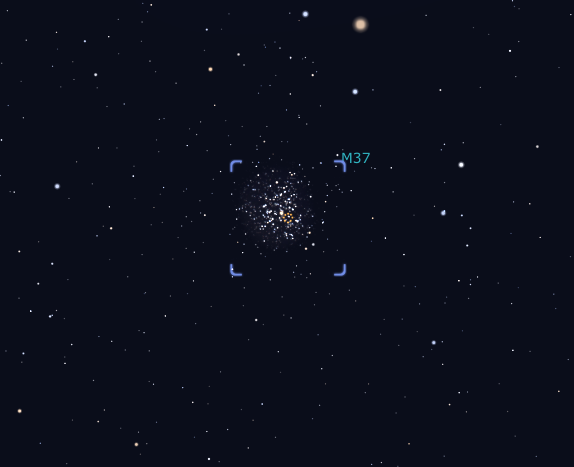Beautiful binocular clusters
I’m chasing Messier objects with binoculars at the moment. To be honest most aren’t all that impressive, but whilst searching out these objects in Ophiuchus I encountered something fabulous.
I found a huge cluster of bright stars with an obvious profusion of faint stars forming the background field. It immediately struck me that after a lean time on Messiers this object was what binoculars were made for.
But I wasn’t done!
Finding your target
Navigating to open clusters with a red dot finder is difficult. Many are some distance from a visible bright star – bright is magnitude 4 or more around here – and an Alt-Az (Altitude–Azimuth) mount is next to useless without an optical finder under these conditions.
When double star hunting I usually prefer my Equatorial mount, and I think it’d be the best tool for the open clusters program too. Heavy though it is, once aligned it’s much easier to find your way around using the slow motion controls for RA (Right Accession) or Dec (Declination) whilst looking through the eye piece.
Cluster confusion
You may remember that I announced my intention to complete the open cluster program this year. Well we’re a couple of months in and a few things are clearer to me now. And that year’s seeming short than I’d expected.
When is a group of stars a cluster?
As a relatively new observer I’m used to open clusters like M37 which, courtesy of Stellarium, looks something like this.

They’re pretty obviously a cluster of stars aren’t they, so no problem there, even I can find that as long as I’m looking at the right one.
Becoming a better observer
This is my third year as an astronomical observer, and I’ve decided the time has come to kick off a few projects aimed at improving my practical skills.
Observing open clusters.
The Astronomical League have some fantastic material and programs that are available online, even to non-members. I wish British astronomical organisations were more like their American counterparts (a discussion for another day).
Anyway, the program that’s caught my imagination is the Open Cluster Observing Program which provides a list of 125 objects from various catalogues, most of which I’ve never encountered. I’ve decided the best, and most obvious, place to start is the Basic program which states the following requirements.
Robotic astrophotography
Disclaimer: the views expressed here are those of a visual observer… there are many talented astrophotographers out there, but I’m not one.
Whilst it’s possible to get surprisingly good astronomical images by sticking your phone up against the eye piece there are limits. If you want to push them things can get very expensive, very quickly.
The mount is typically the first upgrade. If you can’t align the mount, rely on it to track smoothly, and be rock solid whilst doing it, you’re likely to get disappointing results.
Blogging about amateur astronomy
My name is James Whinfrey and I’m in my third year of amateur astronomy in the UK where it’s wet and cloudy.
I’m not sure why I started, other than the first BBC Stargazing Live, but I’m very glad I did, and I’m hoping I can convince others to have a go too.
I’ve progressed from clueless staring into an eye piece to moderately more-knowledge-than-none and a member of several organisations including a local astro society in Northampton.